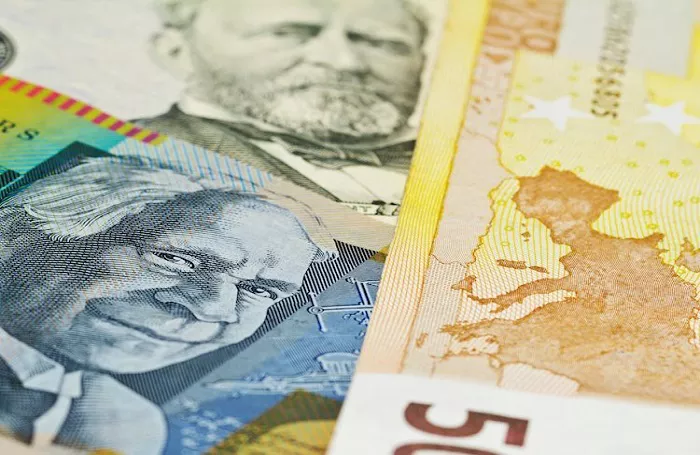In the Asian trading session on Thursday, the AUD/JPY currency pair was hovering around the 91.00 mark. This came as a result of a combination of factors, with renewed optimism surrounding trade negotiations between Australia and the European Union (EU) providing some support to the Australian dollar (AUD), while the Japanese yen (JPY) maintained its own dynamics in the backdrop of economic data releases.
Renewed Hopes in Australia – EU Trade Talks
The EU and Australia took a significant step forward on Wednesday evening. In a one – hour video call, EU officials agreed to revive the previously stalled trade negotiations. EU Trade Commissioner Maros Sefcovic proposed setting a new timeline for discussions with Australian Trade Minister Don Farrell. The previous round of these crucial trade talks had broken down two years ago. The sticking point then was the thorny issue of agricultural market access for the EU’s vast consumer base of 450 million people. Now, with the resumption of negotiations, there is a glimmer of hope for Australian exporters. If an agreement can be reached, it could open up new opportunities for Australian agricultural products in the EU market, potentially boosting the Australian economy and, in turn, providing support to the Australian dollar.
AUD Faces Headwinds Amid Global Trade Tensions
However, the path for the Australian dollar is not without obstacles. Escalating trade tensions between the United States and China have cast a shadow over the AUD. US President Donald Trump’s recent announcement of an immediate tariff hike on Chinese imports to 125%, following China’s retaliatory increase to 84% on US goods, has created significant uncertainty in the global trade landscape. Given Australia’s strong trade ties with China, especially in commodities such as iron ore and energy, any disruption in the China – Australia trade relationship could have adverse effects on the Australian economy. This has led to concerns among investors, which in turn has put downward pressure on the Australian dollar, despite the positive news on the EU – Australia trade front.
Japanese Yen Strengthens on PPI Data
On the other side of the currency pair, the Japanese yen has been showing signs of strength. This is closely related to the release of Japan’s producer price index (PPI) data for March. The PPI climbed 0.4% month – on – month and surged 4.2% year – over – year, exceeding market expectations. This stronger – than – anticipated data has significant implications. Higher producer prices may eventually translate into higher consumer prices. As a result, market expectations are growing that the Bank of Japan (BOJ) will continue to raise interest rates in an effort to keep inflation in check. The prospect of further interest rate hikes by the BOJ is lending support to the Japanese yen, which could limit the upside potential of the AUD/JPY cross.
Factors Driving the Japanese Yen
The Japanese yen is one of the world’s most actively traded currencies, and its value is determined by multiple factors. The performance of the Japanese economy plays a crucial role. Additionally, the Bank of Japan’s policies have a direct impact.
The BOJ has, at times, intervened in the currency markets, usually with the aim of weakening the yen. However, it has become more cautious in doing so due to political sensitivities with its major trading partners. From 2013 to 2024, the BOJ’s ultra – loose monetary policy led to a depreciation of the yen against its major currency counterparts, as there was a growing divergence between its policy and those of other central banks. More recently, the gradual unwinding of this ultra – loose policy has provided some support to the yen.
The differential between Japanese and US bond yields also influences the yen. Over the past decade, the BOJ’s ultra – loose stance created a widening policy gap with the US Federal Reserve. This led to a wider differential between 10 – year US and Japanese bonds, which generally favored the US dollar. But the BOJ’s decision in 2024 to gradually move away from the ultra – loose policy, combined with interest – rate cuts by other major central banks, is now narrowing this differential.
Moreover, the yen is often regarded as a safe – haven currency. During times of market stress, investors tend to flock to the yen due to its perceived stability and reliability. Turbulent market conditions are likely to strengthen the yen relative to other, more risky currencies.
As the market awaits further developments in the Australia – EU trade negotiations and more economic data releases from both Australia and Japan, the AUD/JPY pair is likely to remain volatile. Traders and investors will be closely monitoring these factors to gauge the future direction of this currency pair.
Related Topics:
AUD/JPY Stagnates Near 93.70 as RBA Rate Decision Spurs Little Movement
AUD/JPY Stabilizes at 96.50 Amid CPI Miss, Focus Shifts to US-China Trade Talks


